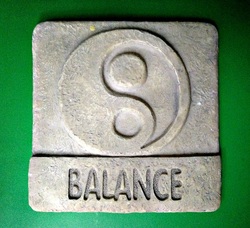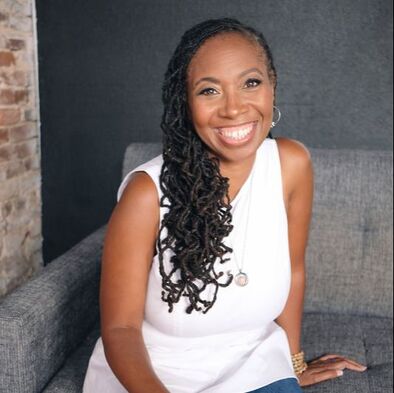 "Low Battery" 10% of battery remaining How many times have you seen this message pop up on your smart phone or tablet? This battery alert is all too familiar for most of us who are plugged in non-stop, frustrated when our devices threaten to disconnect us from the world. But, do you recognize the warning from your body that notifies you that your batteries are getting low? Recently, I found that I'd misplaced one of my chargers. The result: using one charger to attempt to maintain 2 devices. I didn't allow one device to fully charge before disconnecting it from its power source but still expected it to keep on working for long periods of time. The realization dawned on me that we often do the same thing. We don't always pay attention to how much charge we have and it's not until the alert goes off (or worse yet the device dies altogether) that we realize we need to plug in. So, it's got me thinking about how consistently I plug into my Source to keep my battery fully charged. As I develop a system to put into place to minimize the frequency of draining my battery completely, here is what I am considering to avoid hitting zero:
And finally, the recognition that my spiritual health is the key to maintaining my physical and emotional health reminds me that I need to consistently plug into my Source (who I call God) and nurture that relationship. This is now my Priority #1. I'd love to hear what makes your list and what you identify as your top priority for keeping your batteries charged. Leave a comment below.
0 Comments
5/30/2014 2 Comments The Myth of Work-Life Balance: 3 Tips for Feeling a Greater Sense of Balance in Daily Life BALANCE. It’s a word that's used often in our culture. Many of us are constantly seeking it. But what does it actually mean? What would it feel like to live a balanced life? What would you do if you could free up just one hour each day to focus on yourself? It is possible. Life feels better when you strategically align the life you live with the person you are becoming. Living an authentic life leads to a balanced life. In September 2012 the New York Times ran a story on straightening out the work-life balance, When the Work-Life Scales Are Unequal. Many of us work 40-60 hours per week (or more) and that doesn't include the work of parenting or personal and family commitments. I've come to believe that “work-life balance” is a myth. Think about it, is your work really not a part of your life? It may not feel like it, but the reality is you are living your life (although maybe unconsciously) while you are working. I used to think that balance was something you found and then life was good from that point on. Now I know better. Finding and maintaining balance in your life is a dynamic process…balancing. What feels balanced to you in this moment may not feel as balanced one week from now. The process of balancing requires many subtle, and sometimes not so subtle, shifts in our internal and external world. It's like practicing the tree pose in yoga. It looks like you're perfectly balanced and yet there are many tiny movements and adjustments required to maintain the pose (Unfamiliar with tree pose? Learn more with this 2 minute video from Yoga Journal). Take a minute to attempt the pose - you'll see what I mean. Now I use the term life balancing. It's not something that will magically happen. I work daily to create habits and rituals that support balancing my life. It takes some time and effort but the return on investment is Big (yes, with a capital B). Here are 3 things that are helping me to move towards feeling a greater sense of balance in daily life: 1. Set the intention. When I deliberately focus on cultivating balance in my life, the conditions that allow me to feel more balanced seem to appear. Energy follows your attention. When you are paying attention to how much balance you sense in your life, it raises your awareness and helps you to know if you're on track. Remember as you pay attention to be kind to yourself in the process. What you learn will help you to know what may need to change to create more balance and harmony in your life. 2. What is my vision for my life? Asking this question regularly has helped me clarify what it is I'm wanting out of life. The focus is not just on what I want to do. It includes how I want to be; how I want to show up in the world. Having a clear vision helps me in making decisions that support and move me in the direction of my vision. 3. Practice making decisions and maintaining healthy boundaries. Fear of making the wrong decision has paralyzed me at times...leading to no decision and inaction. This only creates more stress and throws you way out of any sense of balance you may have had. I have learned that not making a decision is passive action; you are allowing someone else to determine what happens rather than stepping up to lead your life. This lesson has been invaluable. I now practice making more decisions, giving myself permission to make a mistake knowing that it's an opportunity for learning...not the end of the world. I also practice saying, "No" more often. This is simple and yet it feels so hard. I've recognized there are times when I don't say no because of fear of disappointing others or wanting to avoid conflict. I now ask myself if taking on a new commitment, responsibility, or task will move me closer to my vision or away from my vision. This has helped tremendously in being able to clearly say no without feeling guilty about that response. Life balancing is a key component to thriving. And, it is possible. Health and well-being are not simply the absence of disease. Love, joy, energy and a sense of purpose are some of the ways I define well-being, along with creating enough space in my life to show up and be fully present with the experiences I am having. This is my motivation for balancing my life. I'm interested in hearing what gets in your way of balancing your life and what's helped you to overcome those obstacles. Leave a comment below.  "Life has become too busy. I need to slow down." I heard myself silently repeat these words all too often throughout my week. Each time I said them, I acknowledged that something needed to change, yet nothing did. As I sat down for the umpteenth time to create a plan to better manage my time, I had a revelation. I am the common denominator throughout the periods of busyness. I realized I didn't need another time management system to learn. I needed to learn the art of self-management. While I said my intention was to slow down and create more space in my life, I continued to take on new projects, volunteer for tasks and committees, etc. The question I really needed to answer: "Why was I (sometimes unconsciously, sometimes not) keeping myself so busy?" As I reflected on this question in my meditation, I started to notice how uncomfortable I was with "down time". Even when there were no deadlines to meet, I found myself on my laptop checking email, researching ideas, and surfing the net. It would be one thing if this activity led to greater productivity and results; unfortunately, that wasn't generally the case. When I wasn't busy, there was a sense of dis-ease as difficult emotions emerged: sadness, loneliness, and disappointment just to name a few. Working had become a convenient excuse to avoid dealing with these feelings. Once I recognized and accepted this truth, I had a choice: continue to do things the way I always had and get the same results; OR do something different. I decided to do the latter. So, how do you both slow down AND manage the difficult emotions that arise?
It's important for you to open your heart and mind in this process. Be gentle with yourself. When you prioritize taking care of you, your life shifts in positive and unexpected ways. And you give others permission to do the same as you model being present for your life. This is the key to balancing your life. Your loved ones will thank you. Your future self will thank you. Leave a comment below and let me know what helps you to slow down. |
Life Beyond Clinical Practice with Dr. Michelle Bailey
|

|
Hi, I'm Dr. Michelle Bailey.
I help physicians who are unhappy or unsatisfied with their current career find a nonclinical career that they love. Retiring early from clinical practice after almost 20 years as a board-certified pediatrician I successfully made the leap and transitioned to a nonclinical career. I'm thriving in my new career and am on a mission to help other physicians do the same with the support, guidance, and community that I wish I had when I was struggling with this decision. You're invited to connect with me in my private Facebook community for physicians to learn about all things related to your nonclinical career transition. Join here. |
Archives
April 2023
December 2021
November 2021
October 2021
September 2021
August 2021
July 2021
June 2021
May 2021
April 2021
March 2021
February 2021
January 2021
July 2020
April 2020
December 2018
June 2017
December 2014
August 2014
July 2014
June 2014
May 2014
April 2014
February 2014
Categories
All Being Present End Of Year Energy Drains Exercise Feel Free Fitness Free Yourself Getting Things Done Goals Health Leadership Life Lessons Life Vision Mind Body Connection Mind-body Connection Mindfulness Recharging Your Batteries Ritual Self Care Self-care Success Women's Empowerment Women's Health Work Life Balance
Copyright 2023. Michelle Bailey & Company, LLC.
www.drmichellebailey.com. All Rights Reserved.
www.drmichellebailey.com. All Rights Reserved.
Proudly powered by Weebly
 RSS Feed
RSS Feed